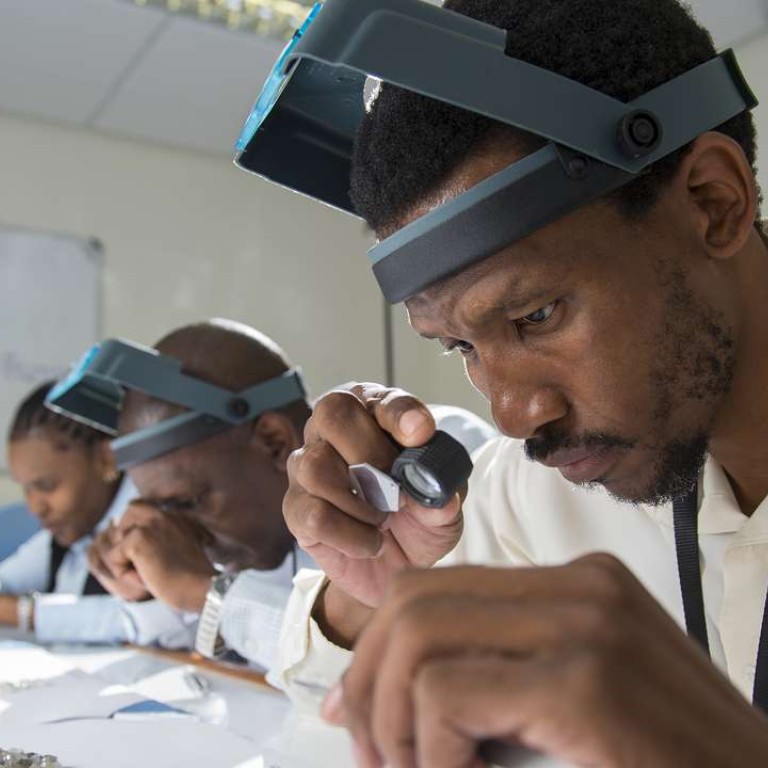
Land of the giants: supersized diamonds are here to stay after producers reveal that old smashing procedures delivered crushing blow to bigger stones
Although diamonds are the hardest substance on the Mohs scale, they can be broken with a hammer and the best ones might be reduced to pieces
These are amazing times for large diamonds. In February, the largest diamond from Angola was found – a 404ct diamond the width of a credit card. In May, the 813ct Constellation sold for US$63 million.The second-largest stone in history, the tennis ball-sized 1,109ct Lesedi La Rona, went on the auction block a month later. The latter two were found within 72 hours of each other.
What would once have been considered a once-in-a-lifetime find might not be as rare as previously thought. Producers were limited by the machinery they used to discover diamonds in mills, but technological advances imply that previous methods might have literally smashed any possibility of large diamonds from coming to light.
Producers all over the world follow a standard procedure. After extracting large chunks of kimberlite ore, the igneous rock found in most diamond pipes, producers routinely pound them into smaller sizes in order to feed them through a special machine that tests the density for any diamonds. The machine is not able to handle rocks beyond 30mm, or it would choke.
Although diamonds are the hardest substance on the Mohs scale, they are quite capable of being crushed by the sorting process. A diamond can be broken by striking it by hand with a hammer against steel. This means that in the course of trying to find diamonds, the best ones might be reduced to pieces.
Paul Day, chief operating officer of Lucara Diamond, the company that discovered the Constellation and the La Rona, calls this the diamond miner’s dilemma. He says that before the advent of modern industrial mining, several large stones were found. The legendary Cullinan diamond, the largest to have ever been found, was extracted with a pocket knife nine metres from the surface in 1905. The 3,106ct stone has since been cut and set into the British crown jewels, leaving the La Rona as the largest diamond in existence today. Day says that bigger diamonds could previously have been crushed into smaller pieces.
To tackle the problem, Lucara Diamond employed a different way to sort through ore. The company had suspected that its Karowe mine in Botswana held exceptionally large diamonds. It uses five X-ray transmission machines which scan rock, one of which can detect diamonds above 1,100ct. Five months after it started the operation, the La Rona was found.
The Canadian company has a reputation for producing huge diamonds. In just three years, it has unearthed 10 of the biggest diamonds found in the past 300 years. In the first half of this year, it yielded 340 “special” stones – diamonds 10.8ct and above. Twelve of those were above 100ct. However, Lucara are not the only ones – the 404ct Angola diamond was discovered by Australian producers Lucapa. This July alone, it recovered 59 “special” diamonds. Petra Diamonds, who runs the Cullinan mine in South Africa, has yielded a string of diamonds over 100ct, including the blue one that was the original stone of the Cullinan Dream, the largest fancy intense blue diamond ever to be offered at auction. It recently sold at Christie’s for a cool US$25 million.
Large diamonds are extremely appealing to collectors and investors, but as more of them surface to meet a growing appetite, it is uncertain whether their exclusivity will be affected. It is worth noting that even though the Constellation set a record for the highest price ever achieved for a rough diamond, the La Rona failed to sell as it didn’t reach its reserve price.
Lucara says it is aiming even higher – by the end of the third quarter of this year it will have the capability to recover diamonds of up to 3,000ct.
It is also working on a “Mega Diamond Recovery” project for diamonds of up to 5,000ct – the size of a softball.
It’s anybody’s guess whether diamonds of such proportions exist, but with the right technology, they have a chance to take their place in history.
